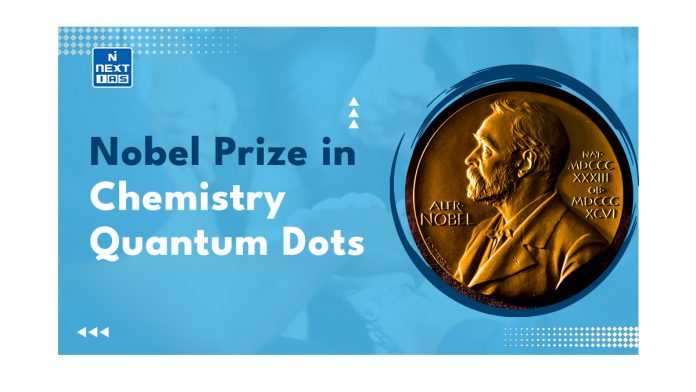The Nobel Prize in Chemistry 2023 was awarded to Moungi G. Bawendi, Louis E. Brus, and Alexei I. Ekimov “for the discovery and synthesis of quantum dots”. These are nanoscale semiconductor particles that have unique optical and electronic properties due to their size and composition.
Materials Forming Quantum Dots
They are typically made of materials like cadmium selenide (CdSe), lead sulfide (PbS), or indium arsenide (InAs) and have a size in the order of a few nanometers.
Uniqueness about the Quantum Dots
These tiny particles with small size exhibit quantum mechanical effects, which give them distinct characteristics that are valuable in various applications, particularly in the fields of electronics and optics.
Properties of Quantum Dots that make them Useful for Applications in Life
The unique size, composition, and electronic property of these very small, semiconducting quantum dots make them very useful for a variety of applications and new technologies.
- Optical Applications: Optical applications because of their their bright and pure colors. They also have the ability to emit rainbow of colors. The colors emitted by them possess high efficiencies, longer lifetimes and high extinction coefficient.
- Zero-dimensionality: Because of the zero dimensional nature of quantum dots they have a sharper density of states than higher-dimensional structures.
- Small Size: Their small size means that electrons do not have to travel as far as with larger particles, thus electronic devices can operate faster. The small size of dots allow them to go anywhere in the body making them suitable for different bio-medical applications like medical imaging, biosensors, etc.
Applications of Quantum Dots
- Display: They are commonly used in display technologies, such as quantum dot displays (QLED). They enhance color accuracy, brightness, and energy efficiency in display devices.
- Lighting: They can be used in energy-efficient and high-quality lighting solutions. They enable the production of white light with precise color rendering and temperature control.
- Biological and Medical Imaging: They are employed as fluorescent labels in biological and medical imaging.
- Solar Cells: They are used in photovoltaic devices to improve the efficiency of solar cells.
- Quantum Dot Lasers: They are used in laser technology, particularly in telecommunications and data transmission applications.
- Quantum Computing: Researchers are exploring the use of quantum dots as qubits (quantum bits) in quantum computing. They offer the potential for improved quantum computing capabilities.
- Sensors: They can be incorporated into sensors for various applications, including environmental monitoring, medical diagnostics, and security.
- Catalysis: They can serve as catalysts in chemical reactions, enabling more efficient and precise control of chemical processes.
- Data Storage: They have been studied for their potential in high-density data storage due to their small size and tunable properties.
- Security and Anti-Counterfeiting: They can be used in anti-counterfeiting applications. Their unique optical properties can serve as security markers in various products and documents.
- Drug Delivery: Functionalized quantum dots can be used in drug delivery systems, helping to target specific cells or tissues and improve the controlled release of pharmaceuticals.
- Environmental Sensing: They can be used in environmental sensors to detect pollutants, toxins, and other substances in air and water.
Usage of Quantum Dots
Their properties of make them ideal for use in unique electronic instruments including:
- Transistors,
- Solar cells,
- Ultrafast all-optical switches and logic gates, and
- Quantum computing.
Properties of Quantum Dots
Their main properties are:
- Size-Dependent Optical Properties: The emission color can be controlled by changing the size of the quantum dot. In this way size and optical properties combine.
- Brightness: They can be very bright and have a high quantum yield, making them valuable for applications like displays and biological imaging.
- Longevity: They are often more stable and longer-lasting than traditional organic dyes, which is advantageous in various applications.
- High Absorption Cross-Section: They have a high absorption cross-section, allowing them to efficiently capture and convert light energy into other forms, such as electrical energy in solar cells.
Versatility: They can be synthesized from various materials and engineered to have specific properties, allowing for a wide range of applications in fields like electronics, optics, and medicine.
Sources:









